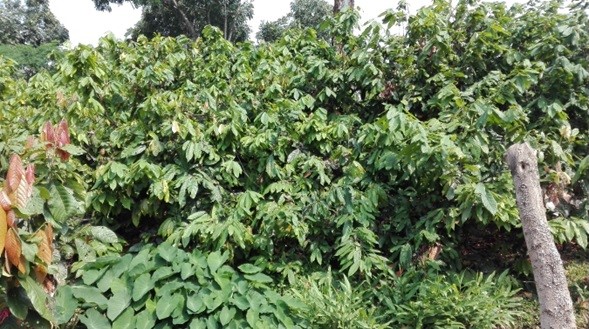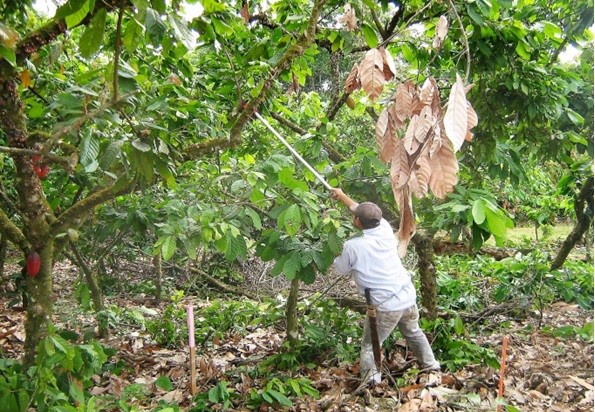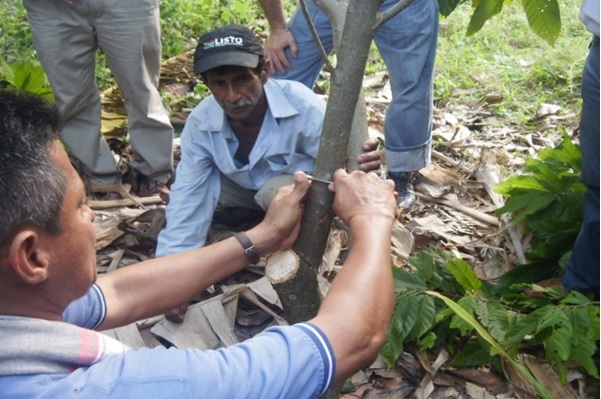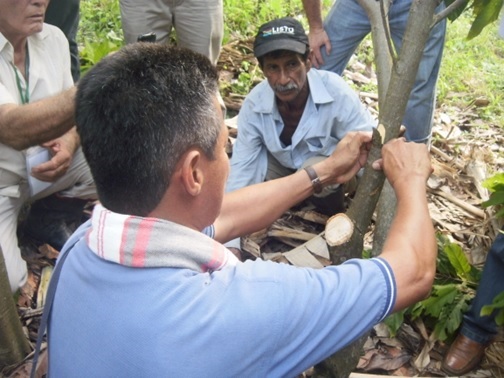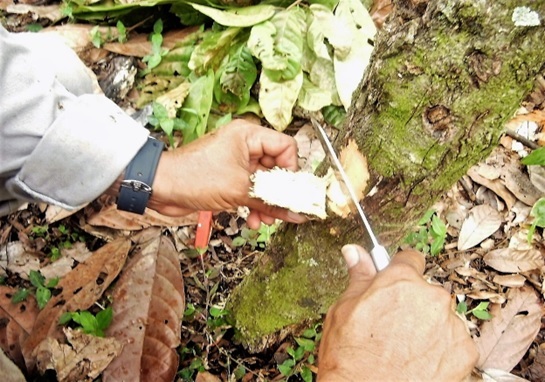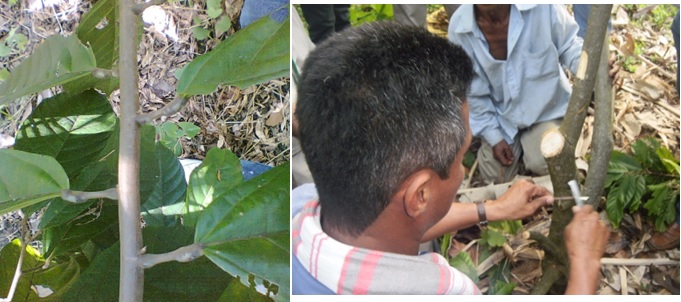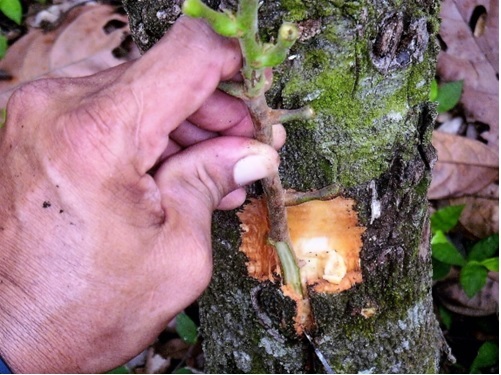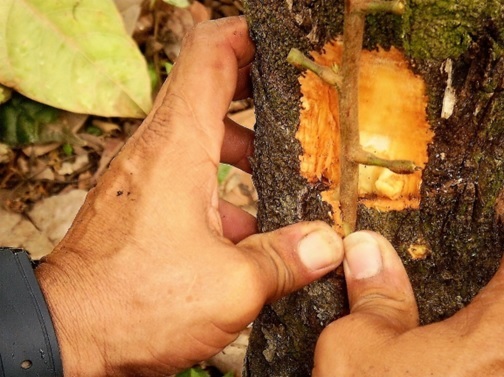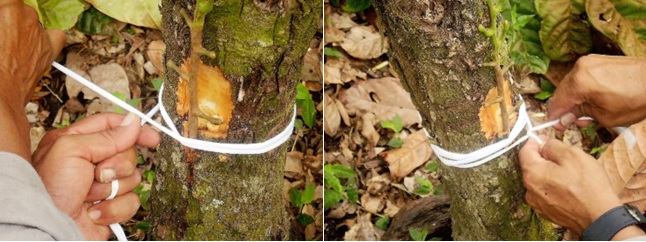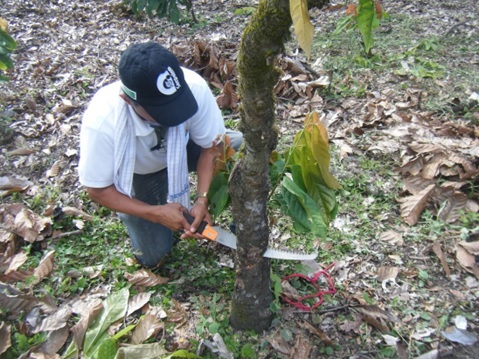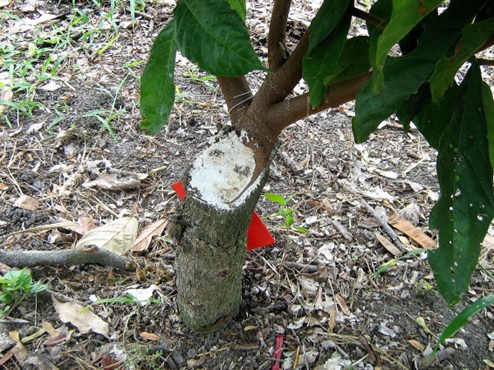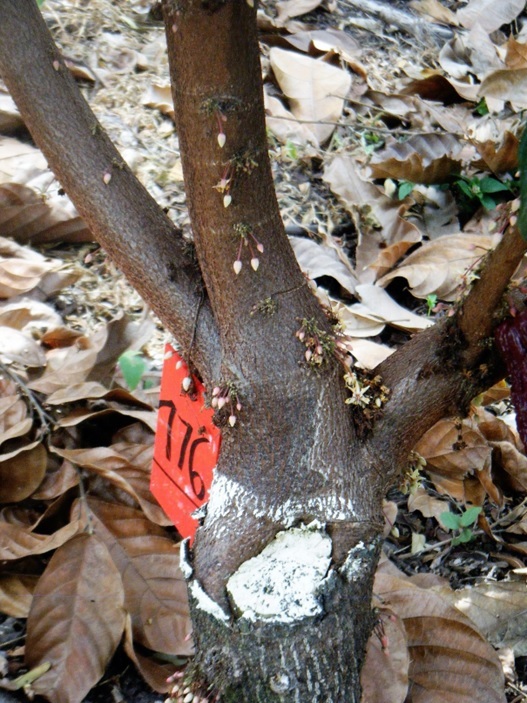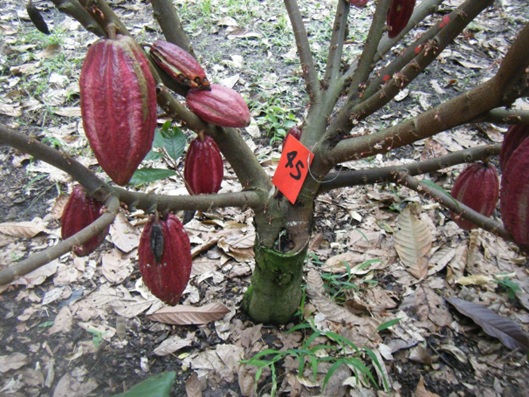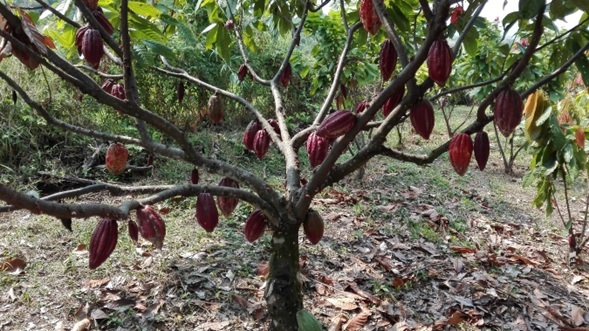Recommendation for the use of the Malayan grafting technique as a practice for the renewal of unproductive cacao plantations
Theobroma cacao L.
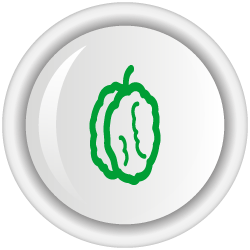
- Thematic area:
- Integrated management of the productive system
- Productive system:
- Cacao
- Geographic coverage:
-
Andean, Caribbean, and Pacific regions
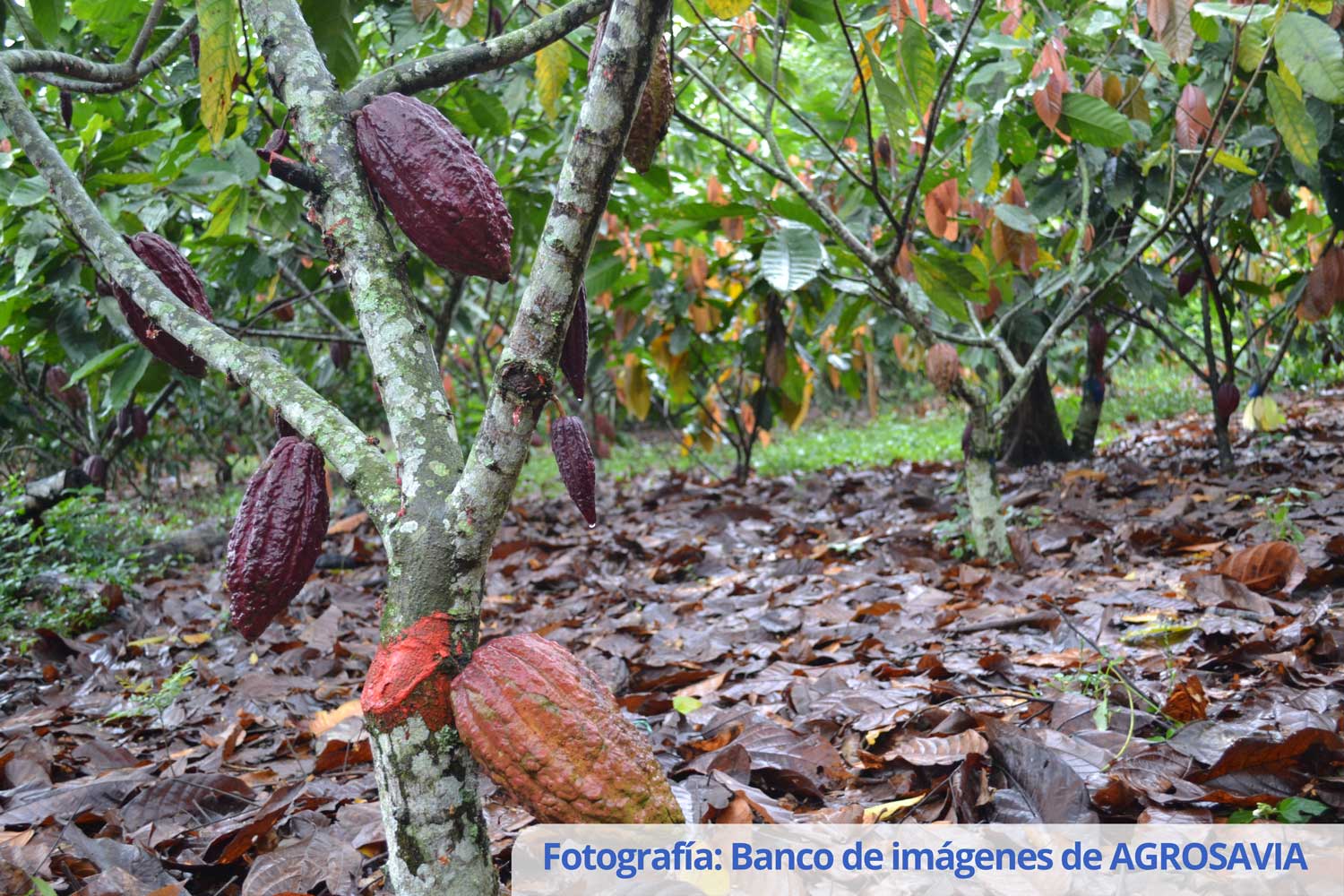
Description
This technology can be implemented in all cacao-growing areas of the country and comprises five phases, namely: 1) identification of the farm and plot to be intervened, 2) diagnosis of the plantation, 3) adaptation of the plot to be intervened, 4) grafting process, and 5) post-grafting work (technical maintenance of the plantation).
- Identification of the farm: Considering the criteria established to be classified as a small or medium producer, a farm with between two and five hectares established in cacao and whose yields are less than 500 kilograms per hectare per year must be selected. Additionally, it must have approximately half a hectare of cacao to rehabilitate the plantation.
- Diagnosis of the plantation: Once the plot has been identified, weed control is carried out, and a soil sample is taken following technical recommendations. Then, the diagnosis is made, which consists of counting and marking productive plants (more than 600 g/plant per year), unproductive plants viable to graft (less than 400 grams per plant per year), unproductive plants with a sucker to graft, defective plants to eliminate, and free spaces. Finally, the transitory and/or permanent shadow is observed, verifying class, age, state, and utility. Mark with an "X" the old timber trees and not economically representative objects to be eliminated. Quantify the percentage of disease incidence (considering the plot plan, select 20% of the plants randomly and count the number of pods affected by Monilia and Phytophthora and the number of brooms on the branch and cushion). List this data in the attached format.
- Plot adjustment: Once the diagnosis has been made, the careful management of the already marked timber trees must be initiated, making proper use of the wood, chopping, and pulling over what is useless. According to the land's topography and the existing timber, a redesign of the plantation is carried out, preserving the recommended distances for subsequent timber planting. The cacao trees selected to be rehabilitated are prepared for grafting, pruning approximately 50% of the foliage 15 days before the trunk is cleaned, from which all knots and/or bulges must be removed so these do not impede the tying of the graft. Trees unsuitable for grafting and with good anchorage, which present well-developed basal suckers, are strongly pruned at ground level. A healing paste is applied and covered with soil. The sucker is moderately pruned. Trees selected as defective will be strongly pruned, chopped, and piled up. In their replacement, already cloned seedlings of the same material used in grafting will be planted in these spaces. In the empty spaces and keeping the recommended distances, stakes will be placed to hollow out and sow grafted seedlings to provide a transitory shade for the new crowns. It is suggested to plant banana rhizomes in the lanes at distances of three meters, taking advantage of the angle root interception.
- Grafting:For trees that are located on slopes, the graft will be done on the side of the slope, and for flat terrain, it will be done in a single north or south direction so that solar radiation does not directly affect the graft. The plant material to be used as a crown is selected as self-compatible or inter-compatible if possible, highly productive, and adapted to the area. The bud-bearing scion for Malaysian grafting should be selected preferentially from the first growth with a diameter of not less than one centimeter, discarding dormant or sprouted buds. These will be transported properly and grafted in a maximum of 24 hours after cutting, locating two consecutive furrows per material (maximum two materials per batch). The type of graft to be carried out is given according to the thickness of the tree trunk to be intervened. The Malaysian type graft can be used in trees with diameters between 5 and 15 centimeters or approximation graft in trees with a diameter of less than 5 centimeters. At an average height of 50 centimeters from the ground, in the selected location of the trunk, initially, a horizontal cut is made in the bark that must penetrate until finding the cambium and wood, then 7 centimeters above the horizontal cut, a bark scraping is made downwards until joining the horizontal cut. Then, one or two 10-centimeter vertical cuts are made downwards to lift the bark and insert the bud-bearing scion. The scion selected for grafting must have two to three viable buds. It is prepared by making two bevel cuts on the lower tip, a short one of approximately 1.5 cm, and on the other side, a long one of more or less 5 centimeters, in such a way that it gives the appearance of a wedge. The twig must be placed with the extended bevel cut making contact with the tree's wood to be grafted. The mooring must be done with an elastic cord or rope as strong as possible. The graft must be covered using stretch film from the lower part of the cut in the trunk, up to about 20 centimeters above the graft, to achieve better protection and engraftment.
- Post grafting:After 20 to 25 days, the stretch film is removed (without releasing the string), and a spray is made as a dew with a fungicide. If the season is rainy, apply the healing paste where the graft is placed. If the graft was not grafted, it must be carried out again in another place at the same height, and in case it was not grafted, this plant will be strongly pruned to generate a sucker or, in extreme cases, renew. Once the graft is grafted properly, the technological package must be applied (correctives, fertilizers, sucker removal, pest and disease control, etc.). As the graft grows (generation of mature leaves), the branches of the parent tree are progressively eliminated until its first crown is completely eliminated (90 to 120 days or development of branches between 40 to 50 centimeters), making a bevel cut for sticking the graft at a 60-degree angle. Apply the healing paste on the cuts, according to the development of the new crown. Pruning and trimming of branches are carried out, and the required anchorage is achieved.
Among the benefits, reaching a productive period in less time is highlighted by reducing the vegetative period of the plant to 18 months. Likewise, costs per hectare are reduced by 50% compared to the new planting.
Audiovisual content
Recomendación de uso de la técnica injerto malayo como práctica de renovación de plantaciones
Podcast
Associated publications
- Foldable: Oferta Tecnológica de AGROSAVIA para el sistema productivo cacao [AGROSAVIA's Technological Offer for the cacao production system].
- Poster: Validación de metodologías para la rehabilitación de plantaciones improductivas de cacao [Validation of methodologies for the rehabilitation of unproductive cacao plantations].
- Book: Modelo productivo para el cultivo de cacao (Theobroma cacao L.) para el departamento del Huila [Productive model for cacao (Theobroma cacao L.) cultivation for the department of Huila].
Image Gallery

